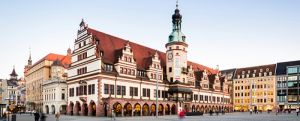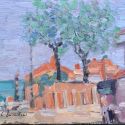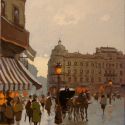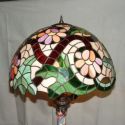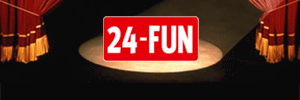 1. The Clock Museum in Ploiesti is a one of a kind museum not only in Romania, but in the whole of Europe, as the only place dedicated solely to this fragile and fascinating instruments of counting and telling of time. Having over a thousand clocks and watches of all kinds in it's collection - only a small part can be part of the permanent exhibition - the museum has several treasures for historians and collectors, among which the very first pocket watch, small musical watches (some over 100 years old) with delicate mechanism which still work, the clocks and watches of important Romanian personalities such as Al. I. Cuza, Constantin Brancoveanu, Mihail Kogalniceanu or I.L. Caragiale. These are just a small part of the exhibits, and to top it all the house which hosts the museum is by itself a splendid work of architectural art.
1. The Clock Museum in Ploiesti is a one of a kind museum not only in Romania, but in the whole of Europe, as the only place dedicated solely to this fragile and fascinating instruments of counting and telling of time. Having over a thousand clocks and watches of all kinds in it's collection - only a small part can be part of the permanent exhibition - the museum has several treasures for historians and collectors, among which the very first pocket watch, small musical watches (some over 100 years old) with delicate mechanism which still work, the clocks and watches of important Romanian personalities such as Al. I. Cuza, Constantin Brancoveanu, Mihail Kogalniceanu or I.L. Caragiale. These are just a small part of the exhibits, and to top it all the house which hosts the museum is by itself a splendid work of architectural art. 2. The Art Museum in Brasov is interesting both for art lovers and professional collectors not only for it's 19th century building, but mainly for it's rich and varied collection of Romanian art, with some works that would be the envy of any collection. It is fascinating to see that in this elegant mansion you can admire works by Theodor Pallady and Nicolae Tonitza, Octavian Bancila or Iosif Iser, Ion Tuculescu or Jean Alexandru Steriadi and the list could go on (and the works do) with the best of modern Romanian art. A selection of masterpieces that you can not simply pass by if you ever take a trip to the city of Brasov.
3. Another place which is mandatory for art lovers who come to Bucharest, the capital of Romania, is the Zambaccian Museum on the street with the same name and in the former residence of collector and art critic Krikor Zambaccian. One of the most respected in the field of Romanian art - and more than that - Zambaccian (1889 - 1962) not only managed to acquier a varied and bountiful selection of works, but also donated it all to the state during the Communist regime. After having been closed in the 70s it was reopened in 1992 and you can admire an impressive selection of paintings, sculpture and furniture, and surely some of the works will be hard to forget.
 4. The Gold Museum in Brad is another interesting landmark if you want to visit something very different from art collections, even if it is rather far from Bucharest. But the trip is well worth the effort, as it is another unique European museum, opened in 1896 and gathering together the richness of real gold nuggets, tools, jewels and works of art in gold and crystal. When you think that the whole collection has over 1500 exhibits made out of gold and found in Romanian and foreign mines, and none of it has ever been modified by a jeweler, it is surely a place where you will have the chance of seeing something that is one of a kind.
4. The Gold Museum in Brad is another interesting landmark if you want to visit something very different from art collections, even if it is rather far from Bucharest. But the trip is well worth the effort, as it is another unique European museum, opened in 1896 and gathering together the richness of real gold nuggets, tools, jewels and works of art in gold and crystal. When you think that the whole collection has over 1500 exhibits made out of gold and found in Romanian and foreign mines, and none of it has ever been modified by a jeweler, it is surely a place where you will have the chance of seeing something that is one of a kind. Photo: wikipedia.org, publicdomainpictures.net


